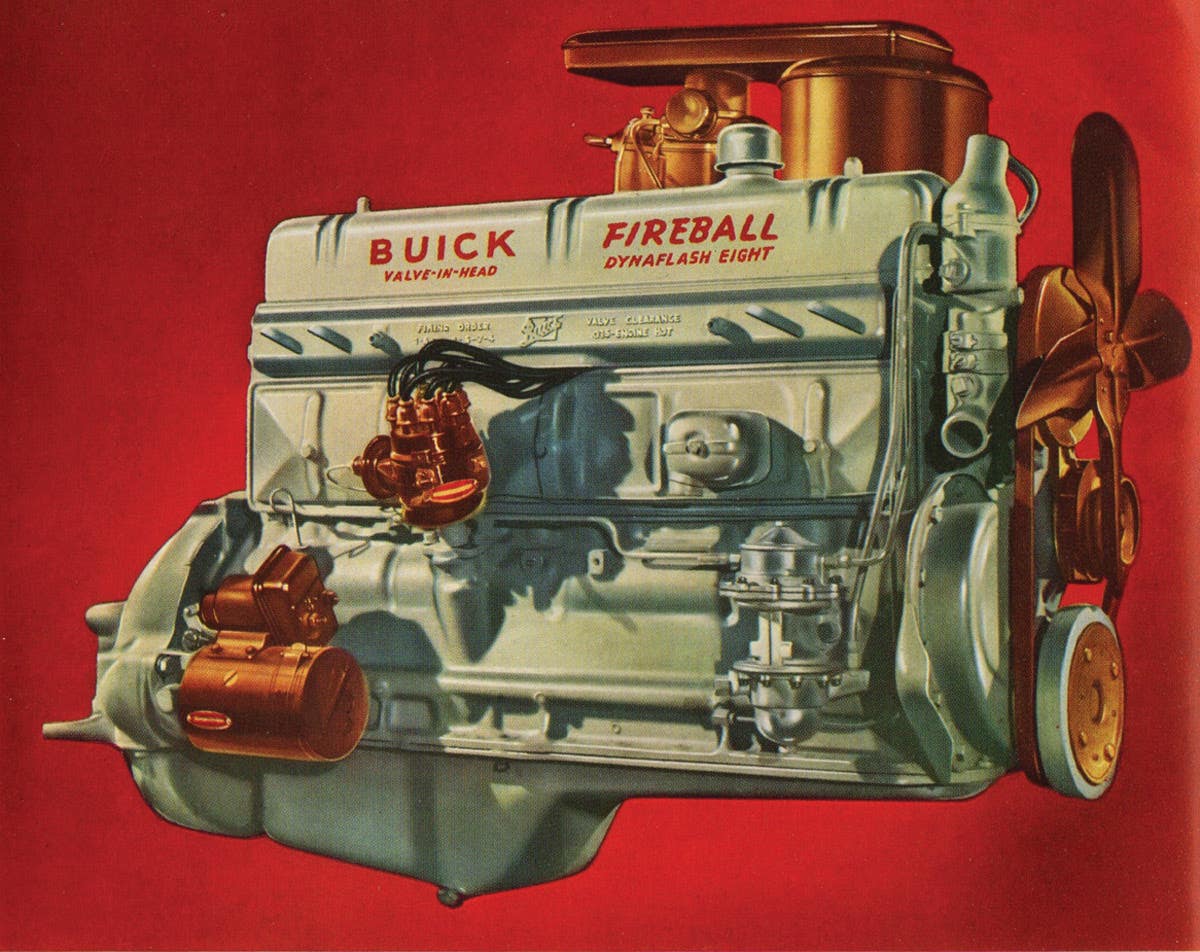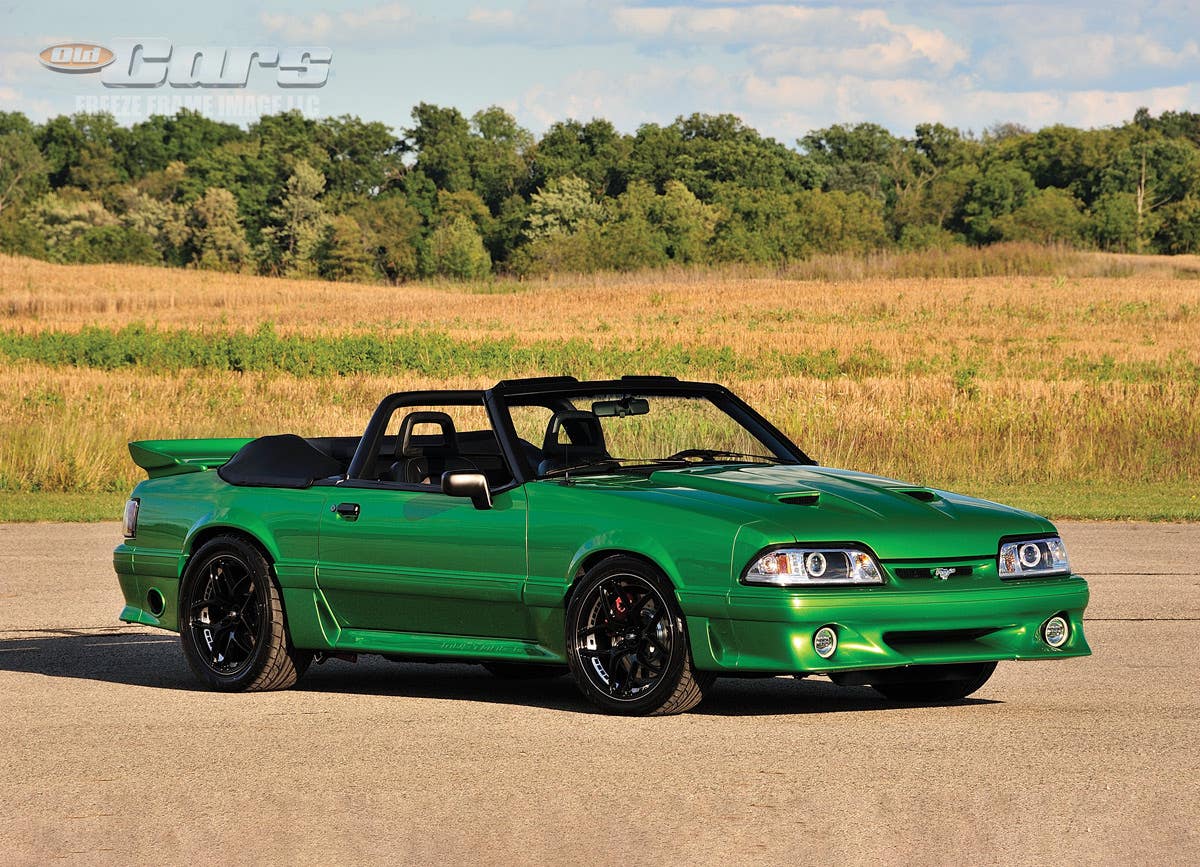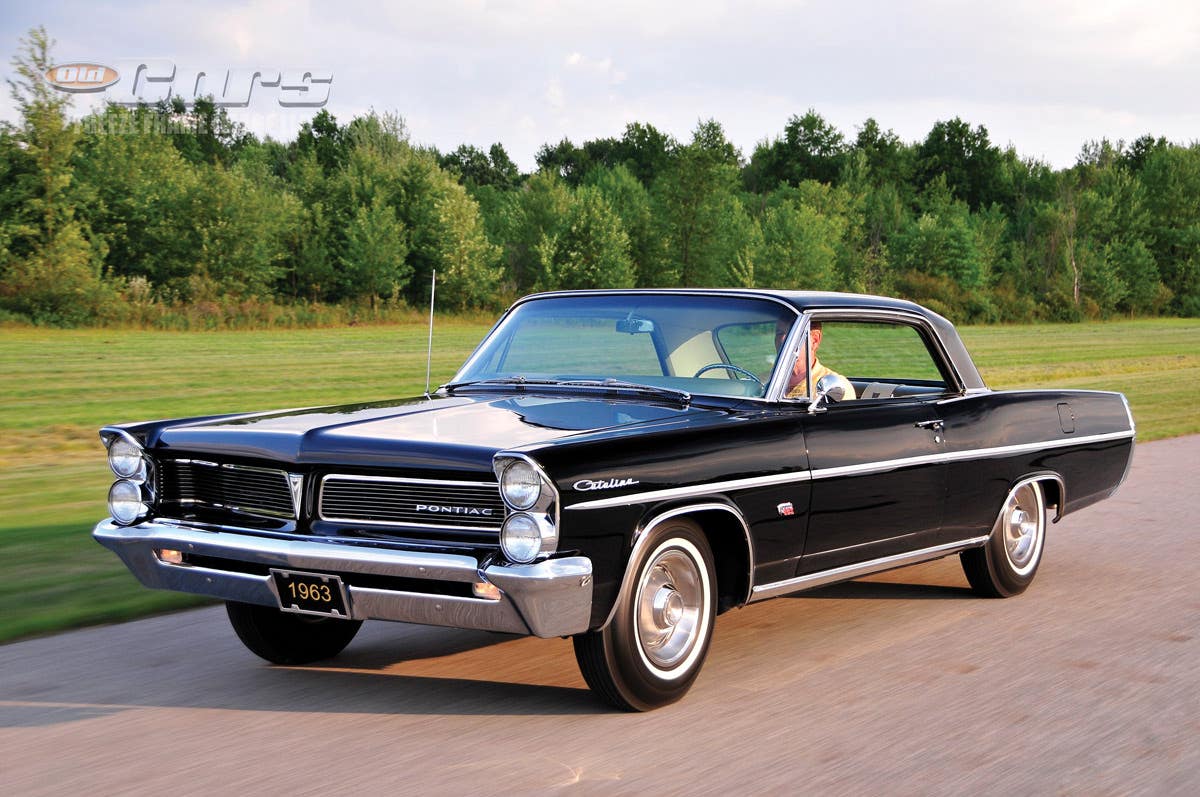Paul Brieske and Milt McMillan debuted their rare pedal car at
one of Arizona’s “hot spots” during the week in mid January.
There was a time when new car launches in the fall were the equivalent of a major happening. Dealerships would shroud their large windows to generate mystery and excitement over what new designs and innovations would be unveiled until the “big day” of introduction arrived. This is when potential buyers and the just-plain-curious would be allowed inside to look, gather brochures and possibly be talked into trading in their current transportation for a shiny new model.
This three-eighths-scale, fiberglass-bodied promotional car,
converted into a “fuelie” ragtop, is owned by Paul Brieske
and Milt McMillan
Harkening back to that era of anticipation and excitement, owners Paul Brieske and Milt McMillan debuted their rare car at one of Arizona’s “hot spots” during the week in mid January when all the traditional collector vehicle auctions are taking place in the Scottsdale/Phoenix area. The natives of LaCrosse, Wis., who winter in Arizona, used the Pavilions Car Show in Scottsdale to showcase their recently restored De Soto Firemite gasoline-engined promotional car. Also on hand to explain about the Firemite was its restorer, Dave Kleespies of D&S Pedal Car Restorations of Tempe, Ariz.
In its current configuration, this Firemite is a three-eighths-scale, fiberglass-bodied replica of the rare fuel-injected 1958 De Soto Adventurer convertible. According to Kleespies, it is one of only three fiberglass-bodied examples known to exist, and the only one in display condition. More appropriately, this Adventurer’s condition goes beyond display-worthy into being concours quality, based on the 296 hours of work Kleespies said he invested in its restoration. His time was obviously well spent, as he said he and the Adventurer’s owners received 20 offers to buy the former Firemite in the first few hours of its display at the show.
This Adventurer’s condition goes beyond display-worthy into
being concours quality
Good idea gone bad
Gasoline-powered, miniature-scale promotional vehicles were not a new idea in mid 1957 when De Soto decided to launch its line of Firemite cars to attract business. But what was a good sales tool idea quickly went wrong.
Kleespies said the original assembly of cars featured bodies that were constructed of polystyrene plastic. This resulted in problems with cracking and chipping, even before the cars were delivered to dealers. This is supported on a web site titled www.jrcentral.com, which is devoted to the history of all miniature-scale promotional vehicles.
According to the site: “While the [Firemites] were good looking, they could not handle the pressures of use. Many of them had cracked bodies before they were even received by the dealers that ordered them. Instead of using fiberglass bodies, the bodies were made with polystyrene plastic that was vacuum formed. In the cold of winter, the bodies would freeze and crack when handled.”
Kleespies said at that point, and, again supported by jrcentral.com, De Soto enlisted the Robel Corp. of Berwick, Pa., to solve the cracking-body problem.
This is where the trail of factual information goes somewhat cold. Kleespies believes that the Firemite owned by Brieske and McMillan might be the actual “buck” or first fiberglass body produced by the Robel Corp. Because the Firemite was launched later in 1957, to coincide with the introduction of the ’58 De Soto lineup, by the time the Robel Corp. was brought on board to solve the cracking body issues, it was getting close to the time when the automaker was devoting resources to its 1959 lineup.
Whether more than three fiberglass-bodied Firemites were produced before the plug was pulled on the program is unknown. Kleespies added, “It never went into full production.” Both Kleespies (www.dspedalcarrestorations.com) and jrcentral.com are actively searching for more of these “second-generation” fiberglass-bodied Firemites to complete its history.
Roddy’s driver
What is known about this particular Firemite is that once the unknown dealership that originally ordered it got its promotional use out of the way, it ended up with a California family who had a boy named Roddy. The family had customized California license plates embossed with “RODDY” made for the Firemite, which was originally dark blue with white striping. The car was eventually purchased by and became part of the famed Harrah Collection of Nevada. When that collection was disbanded, the Firemite was bought by John Cambridge, who left the car intact, including keeping the “RODDY” plates with it.
Brieske and McMillan, who are both collectors of miniature-scale promotional vehicles, purchased the Firemite from Cambridge and hired Kleespies to transform the car into a “fuelie” Adventurer replica.
While Kleespies said he has spent 18 years as the country’s only full-time pedal car restorer, he added that he’s restored approximately 25 of these gas-powered miniature promotional cars. He admitted that transforming the Firemite into an Adventurer posed several challenges, including having to create several of the car’s parts from scratch.
“It’s so unique, a one-of-a-kind,” Kleespies stressed of the restoration. “It’s definitely one of my more satisfying projects.”
Construction details
Kleespies said the Firemite’s original polystyrene plastic body was created from a series of 10-12 molds. These molds still exist with a promotional vehicle enthusiast who resides in Long Island, N.Y. The Robel Corp.’s more refined fiberglass body is actually longer, but the company did not revise its literature for the Firemite with the different body composition, which lists its total weight at 295 pounds.
The jrcentral.com web site and a Robel Corp. spec sheet found on that site lists the construction details of the Firemite as follows: “The car was done in three-eighths scale, which breaks down to 6-1/2 feet long, 37 inches wide, and 29 inches tall if you count the windshield. The engine was a four-cycle, two-horsepower Briggs and Stratton Type 6-B that could be accessed through an opening in the decklid to fill it with gas and start it. There was a kill switch located both on the rear quarter panel and on the dash. The frame was all steel, and had a 44-7/8-inch wheelbase and 2-inch road clearance. The 10-inch by 2.75-inch whitewall tires rode on ball-bearing rims. Headlights, horn and taillights were run by a pair of six-volt hot shot batteries.”
Even though the Robel Corp. spec sheet lists the Firemite’s top speed at five to seven mph (based on a governor that is pre-set at the factory), there was also consideration given to safely stopping the car. A good idea knowing that children would most likely be the primary drivers of the Firemite. The spec sheet reads: “The Firemite has a powerful, foot-activated 4-1/2-inch brake drum on the rear axle.”
Next best thing
De Soto produced only 82 full-scale Adventurer convertibles in 1958. With one exception, the few that were fitted with its new Bendix electronic fuel-injection system were later recalled due to problems, and converted back to “standard” dual four-barrel carburetor form.
The Firemite owned by Brieske and McMillan and converted by Kleespies to a “fuelie” Adventurer softtop tribute car may well be the only way many car enthusiasts will get a chance to see this rare De Soto model — just in a smaller scale.
Want to learn more about the real De Soto Adventurer this miniature was styled after? Go to OldCarsReport.com







